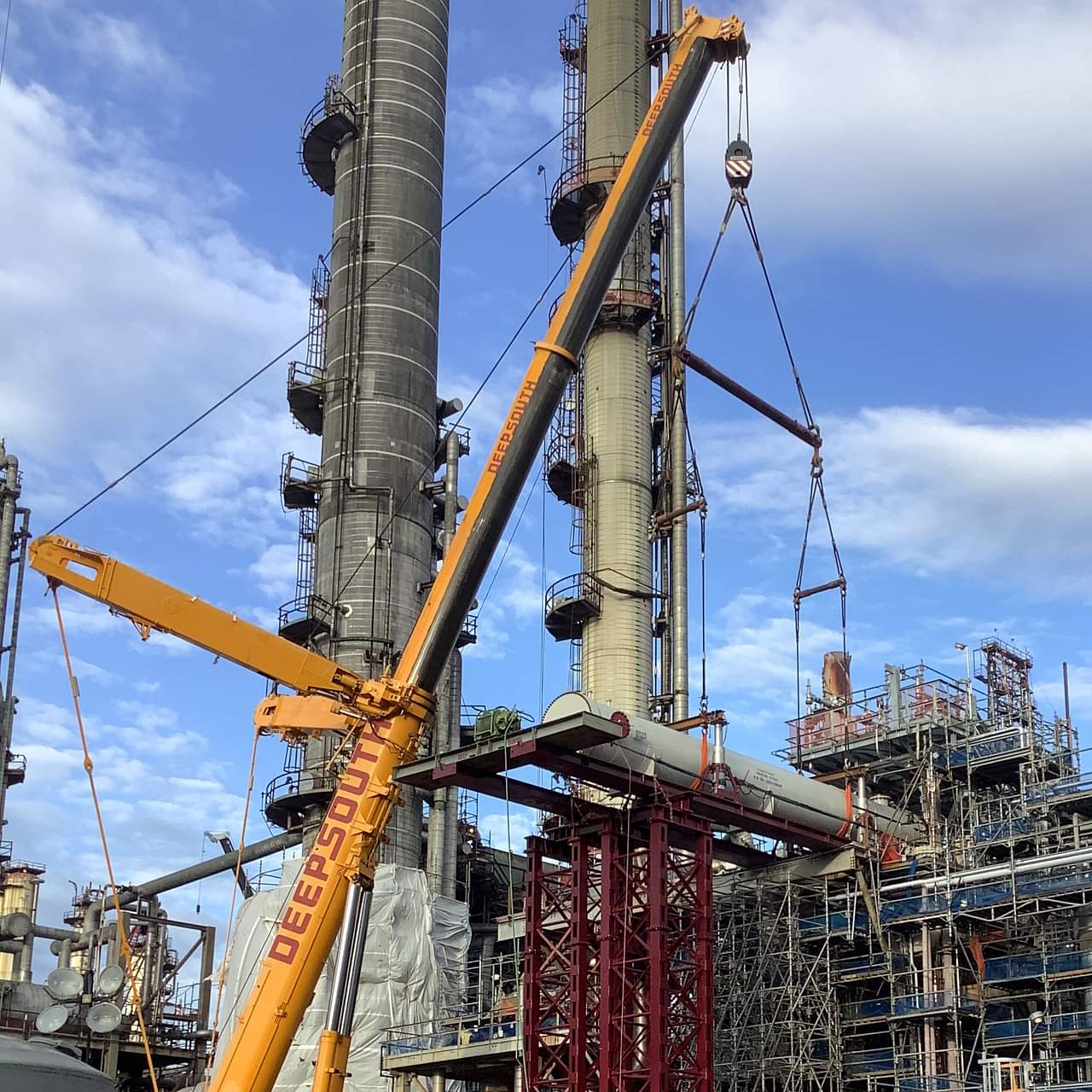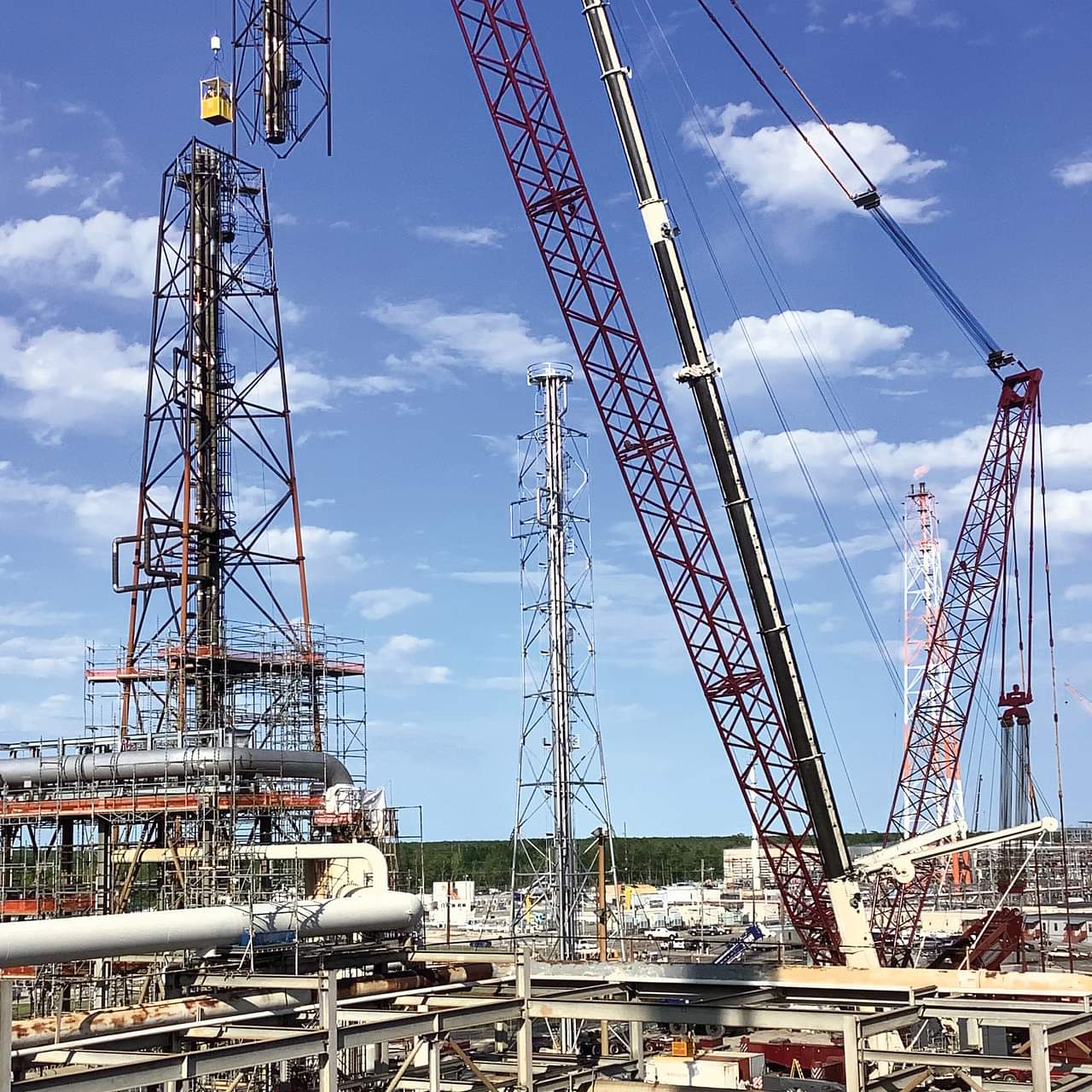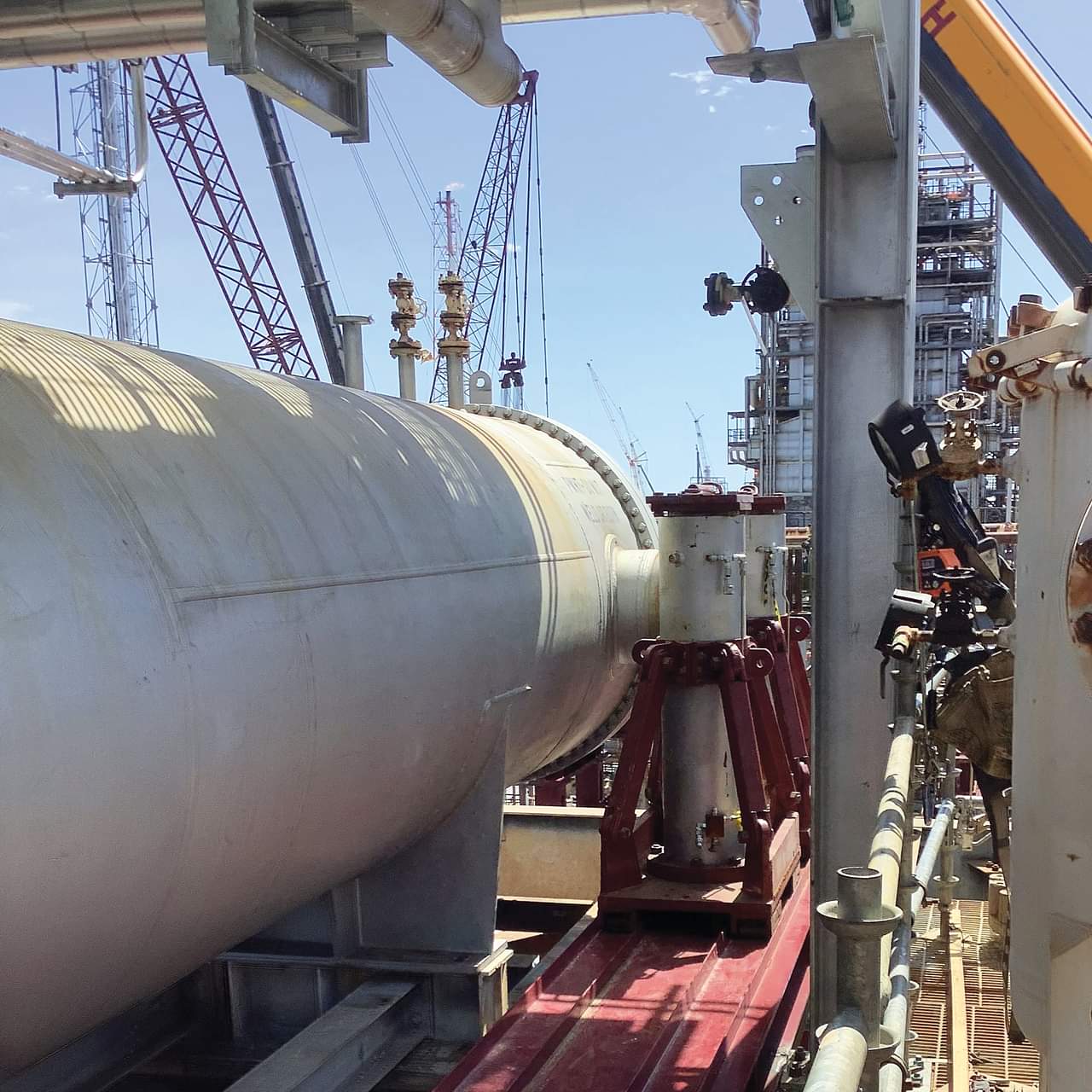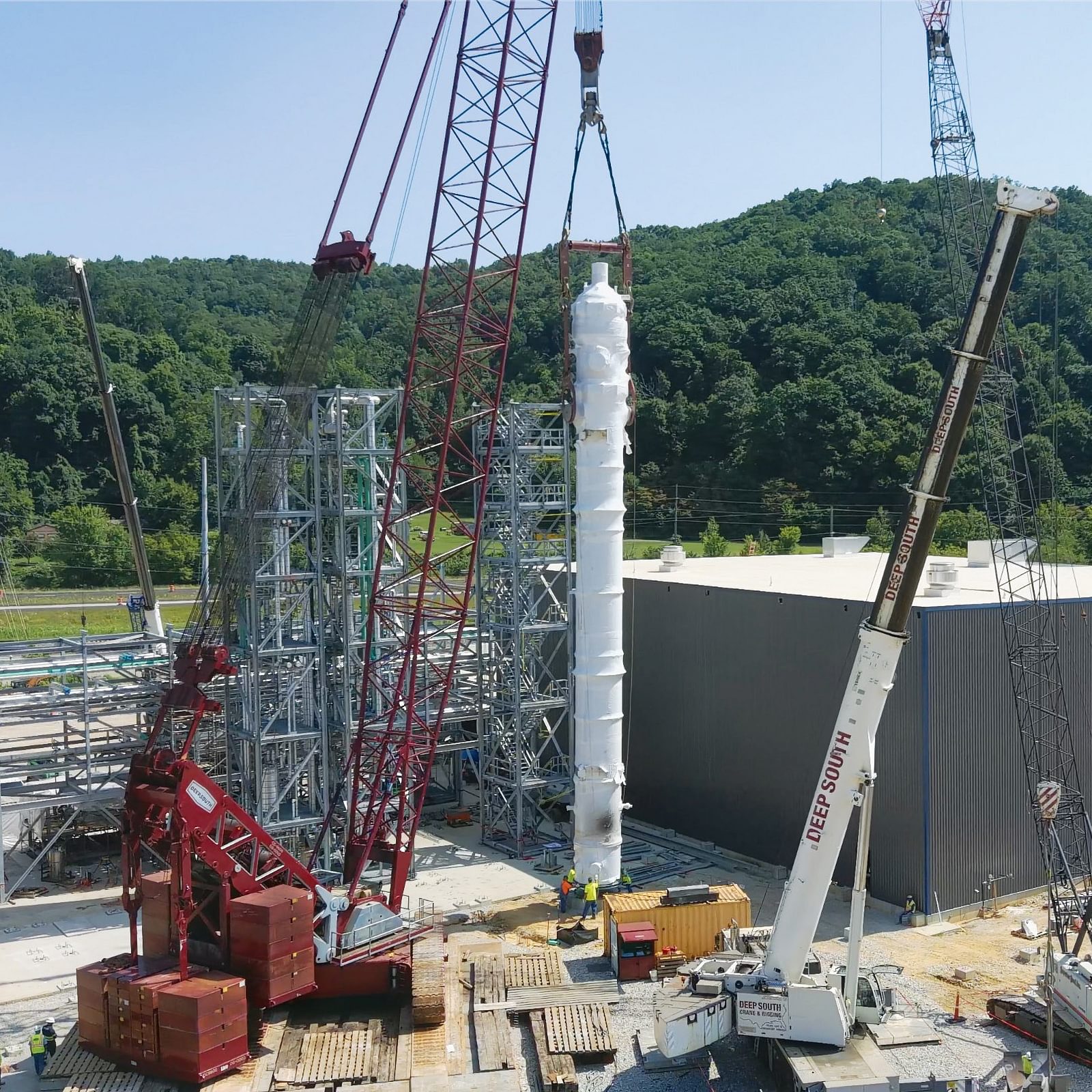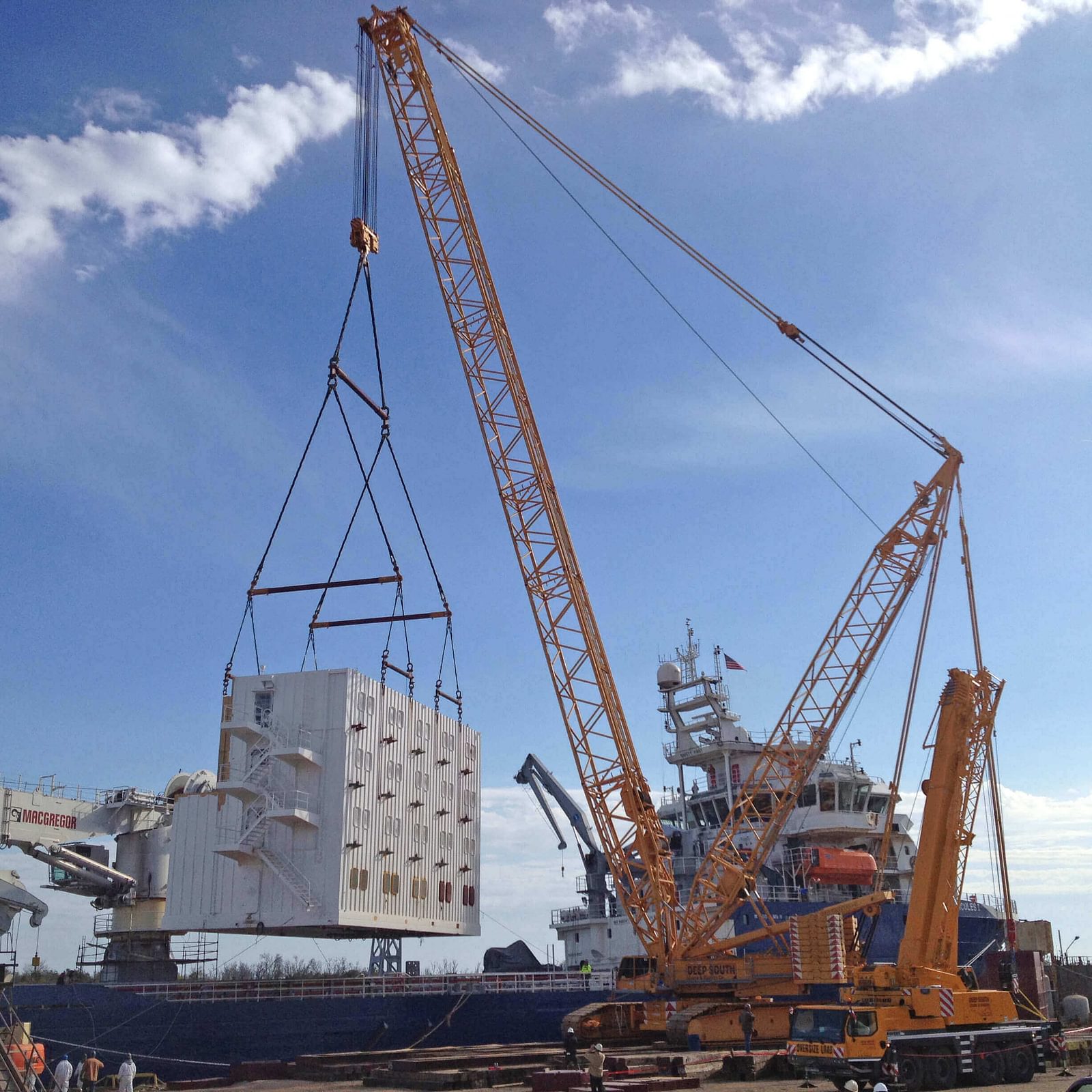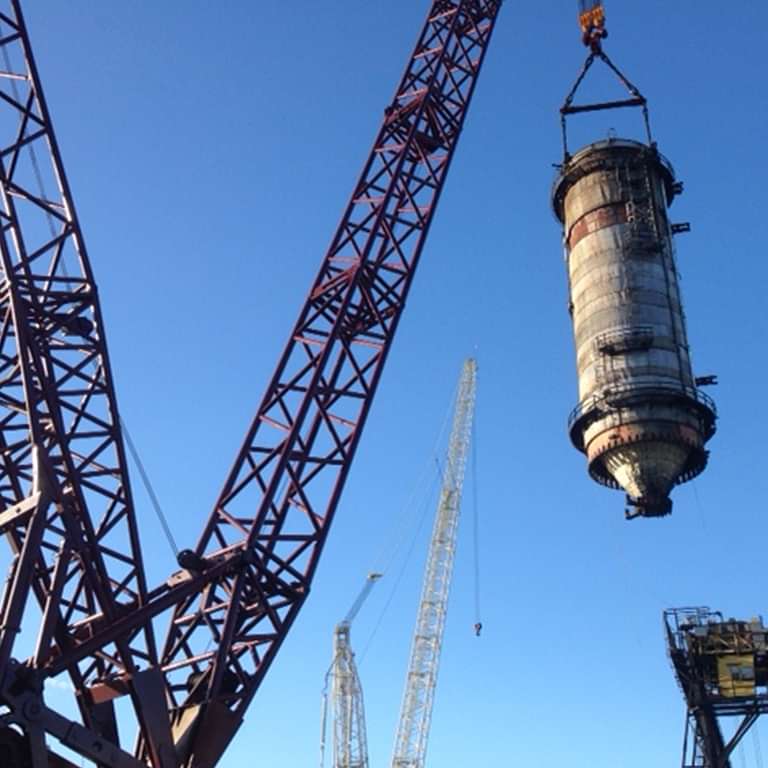A Flare for Efficiency
Routine maintenance plant turnarounds are typically anything but straightforward—as a turnaround in the Southeast quickly demonstrated. The effort called for the removal and replacement of three exchangers, as well as a flare modular replacement. The size and location of the exchangers, the tight window for replacement of the flare, and localized high working-wind speeds were a few of the top challenges that the Deep South team were tasked to overcome.
The complete unit turnaround included the replacement of three exchangers—two on 12’-tall foundations and weighing 359,700 pounds each and one located 43’ above grade weighing 140,000 pounds—as well as a new 300’ tall, 125,000-pound flare.
All Jacked Up
The exchangers were hauled into position using a Goldhofer THP-DL “Dual Lane” transporter and a 24-axle-line Scheuerle SPMT. Because an overhead structure prevented more conventional lifting methods, the exchangers were removed and replaced using a custom-fabricated jack-and-slide method.
The two larger 359,700-pound exchangers were removed and replaced using 55-ft slide rails that were placed on top of the 12-ft-tall foundations and on support stands [not pictured]. One at a time, crews lifted each exchanger onto the slide and moved them into position under the existing structures with a 750-ton VersaCrane CC-9600 crawler crane. The removal and replacement of both of these exchangers took about 14 shifts in total.
The smaller 140,000-pound exchanger was removed and replaced in a very tight area with overhead obstructions using 80-ft slide rails supported by the unit structure and a 43-ft tall Mabey Tower System. First, Deep South built the Mabey Tower System outside of the unit. Deep South then lifted the jack and slide rails into place alongside the exchanger’s foundation and assembled 60-ton Rolling Jacks with header beams to lift the exchanger so it could be extracted from under the deck. There was no room for a traditional jacking method. Once the exchanger was successfully slid into place, where it was free to be lifted out the unit, Deep South lifted it from the slide rails and flew it to grade using a 500-ton Liebherr LTM1400-7.1. A new exchanger was set in the unit using the same method in reverse. The removal and replacement of this exchanger also required about 14 shifts.
The Critical Path
Assembling, transporting and lifting the new 300’ tall, 125,000-pound flare proved especially challenging for the crews due to the limited surface area, the wind-sail effect common in flare construction, and the critical path schedule. The flare was the last item to come offline and the first component that needed to be operational before the entire unit could start back up.
Deep South crews assembled the new flare on pre-turnaround. First, they removed two sections of the existing flare during the turnaround and replaced them with the new module and then set the flare tip.
The team then used a 1,500-ton VersaCrane TC-24000 and a 1,320-ton Terex-Demag AC-1000 to remove and replace the old flare with the new modular flare system, including valves, drums, pumps, and headers. The TC-24000’s high working wind speed capabilities were particularly beneficial during the lifting process.
The entire turnaround project was completed safely, on time, and in accordance with the customer’s specifications.
